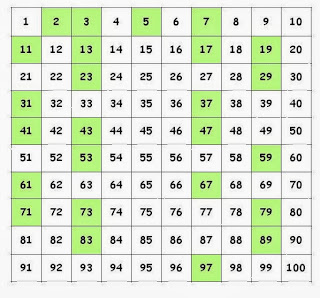
The distinction is drawn between the number five (an abstract object equal to 2+3), and the numeral five (the noun referring to the number). This list focuses on numbers as mathematical objects and is not a list of numerals, which are linguistic devices: nouns, adjectives, or adverbs that designate numbers. This list will also be categorised with the standard convention of types of numbers. For example, the pair of numbers (3,4) is commonly regarded as a number when it is in the form of a complex number (3+4i), but not when it is in the form of a vector (3,4). The definition of what is classed as a number is rather diffuse and based on historical distinctions. This is known as the interesting number paradox. Even the smallest "uninteresting" number is paradoxically interesting for that very property. Numbers may be included in the list based on their mathematical, historical or cultural notability, but all numbers have qualities which could arguably make them notable. The list does not contain all numbers in existence as most of the number sets are infinite. This is a list of notable numbers and articles about notable numbers.

You can help by adding missing items with reliable sources. The search for ever larger primes has generated interest outside mathematical circles, through the Great Internet Mersenne Prime Search and other distributed computing projects.This is a dynamic list and may never be able to satisfy particular standards for completeness. Since 1951 all the largest known primes have been found using these tests on computers. 1878), the Lucas–Lehmer primality test (originated 1856), and the generalized Lucas primality test. Methods that are restricted to specific number forms include Pépin's test for Fermat numbers (1877), Proth's theorem (c.

#PRIME NUMBERS TRIAL#
Many mathematicians have worked on primality tests for numbers larger than those where trial division is practicably applicable. Another important 19th century result was Dirichlet's theorem on arithmetic progressions, that certain arithmetic progressions contain infinitely many primes. Although the closely related Riemann hypothesis remains unproven, Riemann's outline was completed in 1896 by Hadamard and de la Vallée Poussin, and the result is now known as the prime number theorem. Ideas of Bernhard Riemann in his 1859 paper on the zeta-function sketched an outline for proving the conjecture of Legendre and Gauss. A simple but slow method of checking the primality of a given number n, proved in 1852 by Pafnuty Chebyshev. The property of being prime is called primality. Primes are central in number theory because of the fundamental theorem of arithmetic: every natural number greater than 1 is either a prime itself or can be factorized as a product of primes that is unique up to their order.

However, 4 is composite because it is a product (2 × 2) in which both numbers are smaller than 4. For example, 5 is prime because the only ways of writing it as a product, 1 × 5 or 5 × 1, involve 5 itself.

A natural number greater than 1 that is not prime is called a composite number. Composite numbers can be arranged into rectangles but prime numbers cannot.Ī prime number (or a prime) is a natural number greater than 1 that is not a product of two smaller natural numbers.


 0 kommentar(er)
0 kommentar(er)
